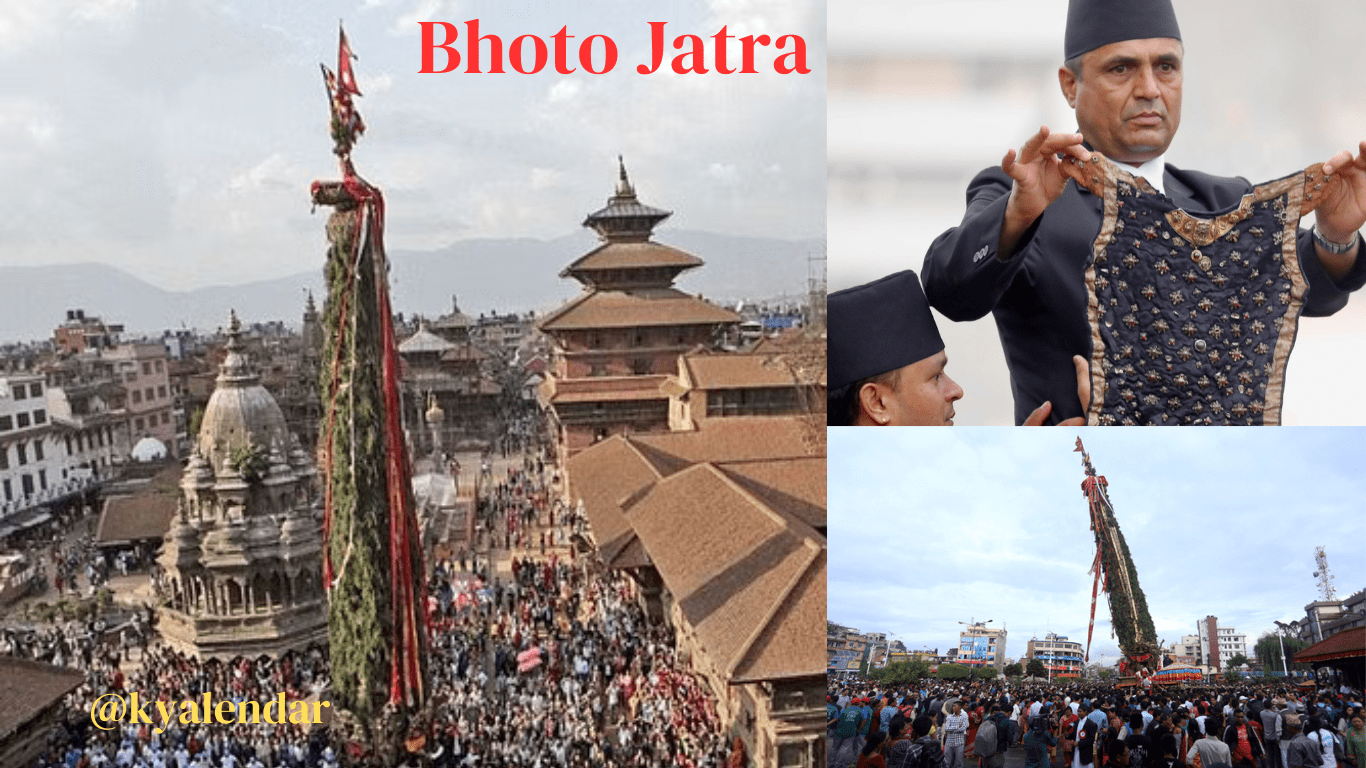
- This event has passed.
Bhoto Jatra
August 4

Bhoto Jatra, also known as the “vest festival,” is a significant cultural event celebrated in Kathmandu, Nepal. It is part of the larger festival of Rato Machhindranath, which is one of the most important and oldest festivals in the Kathmandu Valley, dedicated to the rain god, Rato Machhindranath (also known as Bungadya or Karunamaya).
Historical and Cultural Significance
- Origins: The festival dates back to the 7th century and is believed to have been started by King Narendra Deva, Guru Bandhudatta, and a farmer named Lalit to bring rain during a drought.
- Deity Worship: Rato Machhindranath is worshipped as the god of rain and harvest, which is essential for the agrarian communities of the valley.
Rato Machhindranath Festival
- Duration: The festival lasts for several months, typically from April to June, and culminates with Bhoto Jatra.
- Chariot Procession: The central event involves the construction of a large chariot (ratha) in Pulchowk, Lalitpur, where the deity is placed and paraded through various parts of the city. Devotees pull the chariot through designated routes, accompanied by traditional music, dances, and rituals.
Bhoto Jatra
- Timing: Bhoto Jatra marks the end of the Rato Machhindranath festival, usually held in the month of June or July, depending on the lunar calendar.
- Venue: The event takes place at Jawalakhel, Lalitpur.
- Ceremony: The main ritual involves the display of a sacred bhoto (vest) believed to be endowed with mystical powers. The legend associated with the BHOTO dates back to a mythical time when a farmer lost his precious jewelled vest, which was later found by a serpent king (Naga). The vest is shown to the crowd by a priest from the chariot while the public eagerly watches to see the vest and to witness the ceremony.
- Royal and Government Presence: Traditionally, the King of Nepal (or the President after the monarchy was abolished) and other high-ranking officials attend the event, adding to its importance.
Legends and Myths
- The Lost Vest: One popular legend narrates that a Naga (serpent deity) had lent the BHOTO to a farmer, which was later lost. The farmer found it during the festival, leading to its display to claim the rightful owner.
- Rain and Harvest: The festival is deeply intertwined with agrarian beliefs, where the timely celebration is believed to ensure good rains and bountiful harvests.
Modern Celebrations
- Community Involvement: The festival sees massive participation from local communities, including Newars, who are the indigenous people of the Kathmandu Valley. They engage in various cultural performances, rituals, and communal activities.
- Tourist Attraction: Bhoto Jatra, with its unique cultural elements, attracts numerous tourists, showcasing the rich heritage of the valley.
Significance in Today’s Context
- Cultural Preservation: The festival plays a crucial role in preserving and promoting traditional Newar culture and rituals.
- Unity and Identity: It fosters a sense of unity among the diverse communities of the valley, reinforcing their cultural identity.
BHOTO Jatra remains a vibrant and essential part of Kathmandu’s cultural landscape, reflecting the rich history, myths, and traditions of Nepal.